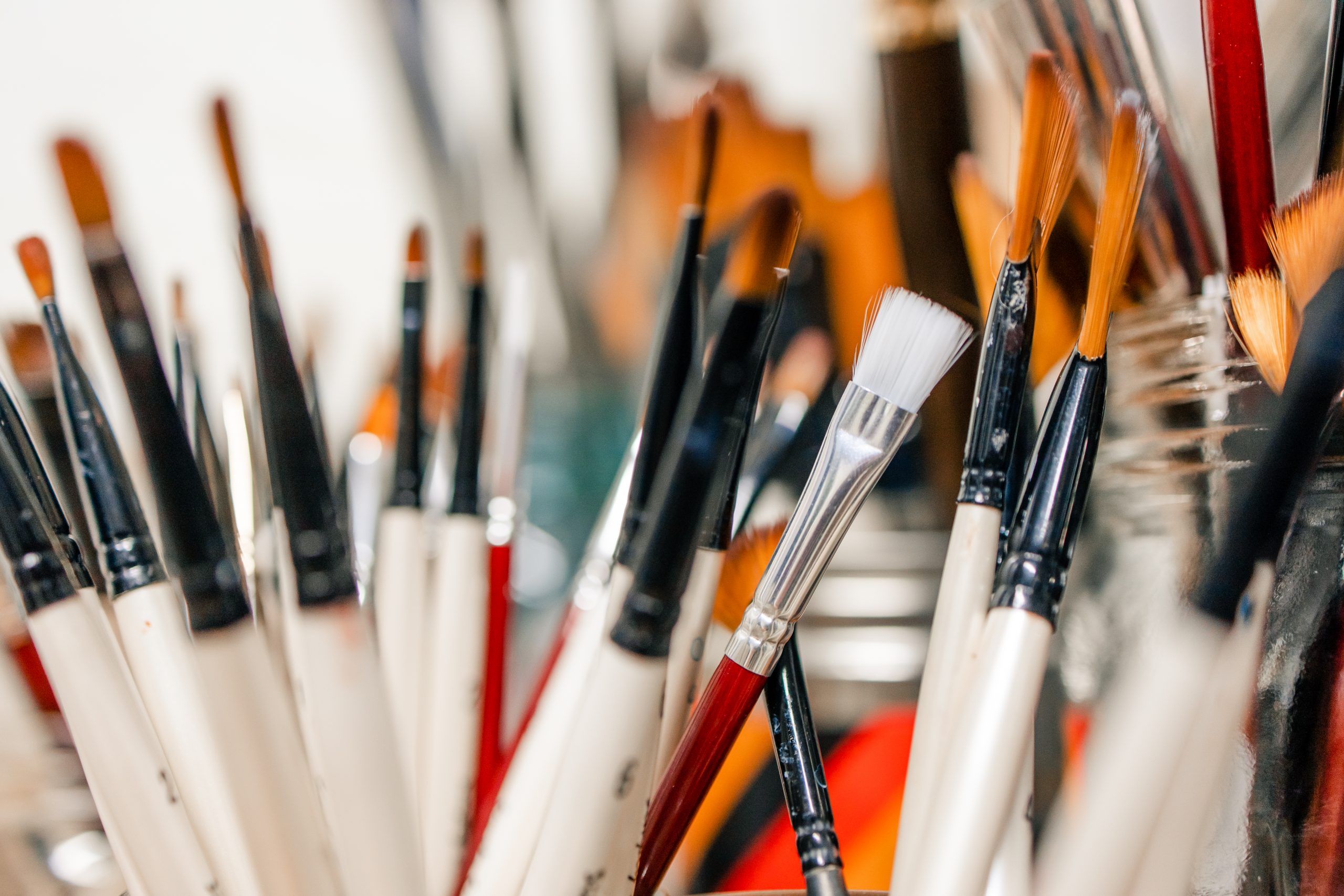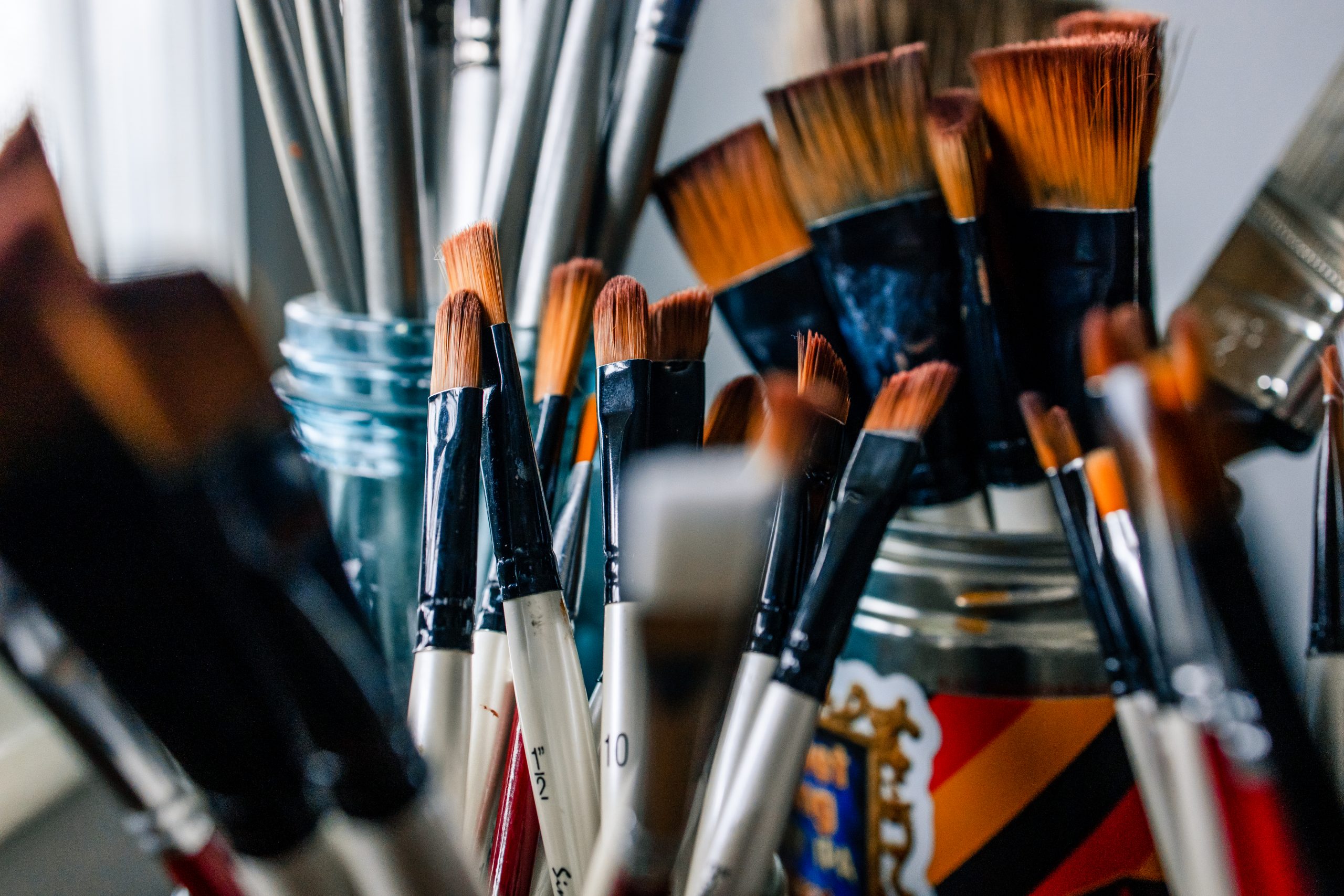How to Clean Oil Paint Brushes in 4 Easy Steps?

It is simple, but important, to care for your synthetic oil painting brushes. Photo by Natalie Runyon
Knowing how to clean oil paint brushes is an important lesson to learn early on as an artist. Brushes are our tools used to create paintings, and it is both cost effective and in our painting's best interests to care for them well!
Unless you clean oil paint brushes often and properly, paint can easily accumulate and dry near the base of the brush near the ferrule causing damage to the bristles. If your brush stays dirty and is damaged you’ll end up with an imprecise tool to paint with.
By properly caring for your tools as an artist and knowing how to clean oil paint brushes, you have a better chance at making a controlled, beautiful painting. So keeping reading for 4 easy steps to clean and care for your brushes.
1: Choose a Soap to Clean your Oil Paint Brushes.

The first step once you've finished your painting session is to gather your brushes and soap and head to the sink.
There are many different types of artists' soaps and cleaners out there, but there are also many affordable, non-toxic options that work perfectly.
Masters Brush Cleaner is a great choice, but a bar of ivory soap will work just as well and help to clean and condition your synthetic brushes.
Brush soap or ivory soap will emulsify (break down) the oil in the paint, which will help us to remove and wash away any paint with water.
Remember that oil is impervious to water. That means that if you just take your oil paint brush and put it in water, the water is going to bead right off of it. So what we need to do is break down the oil with soap and then wash it.

Drag your brush back and forth along the wet bar of soap.
2: Clean Your Brush Well
To begin, take your bar of soap and run it under the faucet to get it wet.
Then drag your brush back and forth, flat side down, across the soap, working the oil out of the brush.
Be careful not to push the brush directly down because it will bend the bristles. Simply drag it along, flat, in each direction.
You'll see the soap will start to foam up and oil will begin to come off the brush.

3: Rinse your paintbrush and repeat.
At this point, your brush is going to get covered with some murky foam. This is the soap and paint coming off the brush.
At this point, just rinse the brush and then come back to the bar of soap and repeat what you’ve done so far.
When you're first learning how to clean oil paint brushes you may tend to stop cleaning before you get every last bit of paint out, so make sure to continue this step until the brush comes clean.

4: Knowing when your brush is clean.
You’ll know your brush is clean when there's no paint coming off it. Both the bar of soap and a piece of paper towel used to dry the brush will show absolutely no tint of color. It will be completely pristine.
When finished and the brush is clean, take the brush and gently pitch it to make it flat like the way it was when you first got it. Let it dry that way and then in a few hours, it'll be ready to be used again
5. A few things to ask and avoid when you clean oil paint brushes.
When learning how to clean oil paint brushes never use very hot water.
The glue that holds your brush together inside the ferrule will break down under hot water and paintbrushes tend to stiffen up under cold water. So instead of hot or cold water, you want to use reasonable comfortable warm water to clean your brushes.
Can I use dish soap?
Dish soap does a pretty good job on brushes but I recommend you purchase a bar of Ivory soap which will last you longer. Be careful what you buy. Ivory soap is probably the best one. If you want to get a liquid soap, you can get something like Murphy's oil. You don't want to use soap that's heavily perfumed if you can help it; it's just more additives in the brush you don't need.
What if my brushes look fuzzy and won't lie flat after cleaning?
As you use brushes, they may become fuzzy or misshapen. If you are careful not to bend the bristles as you clean oil paint brushes or as you paint, you can avoid this for the most part. But often synthetic brushes will lost their shape with use, and a bit of linseed oil after the brush is very clean will help it to dry and retain its shape. Just add a drop of oil to the clean, wet brush, and shape it by pinching it flat with your fingers. Any offending hairs or bristles can be snipped with a small pair of scissors.

